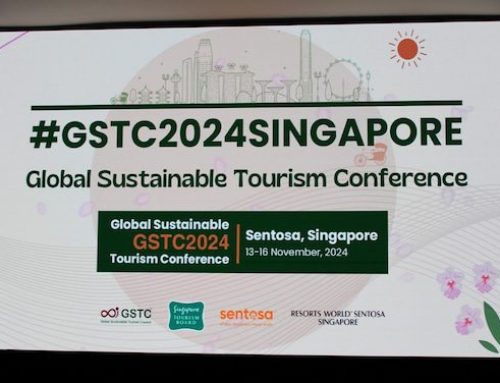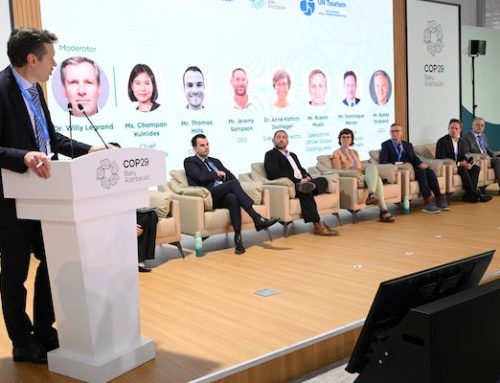By Talia Salem
When studying abroad in Paris, I always marveled at the immaculate historical buildings that surrounded me at every turn. Each building is more beautiful than the other, every meticulous detail representing some important part of France’s history. At first glance, we all might think that buildings like these are just “eye candy” that dot our collective landscapes, but these physical relics represent of our past and form an important part of our future. During that year I lived there, buildings were constantly being maintained, restored and improved on to keep their rich history alive and keep it living today. The monument to the Bastille is still the national place for protests building off the Bastille’s original role in the French Revolution so many years go. Memorials, monuments and relics like these make up such an important part of our culture, but their histories are sometimes lost and the sites themselves are difficult and costly to maintain.
Today is the International Day of Monuments and Sites, the day to celebrate these important and often-threatened sites around the world, which color our lives and landscapes in many ways.
To comment on the importance of this celebration and its intersections with sustainable tourism, we called in an expert: Kelly Bricker, GSTC Chair and Associate Professor of Sustainable Tourism at the University of Utah. Hear what Kelly has to say about heritage sites—it might inspire you to take a trip to Washington, DC.
Can you tell us a story about when you visited a heritage site and what impression it left on you?
Just six months ago I visited the National Mall in Washington, DC. The combination of past and present history about our country left me with a sense of continuity, progress, and purpose. We must learn from each generation, and while tragedy and hope combine within these generations, monuments and sites depicting our history provided me with the sense that we are resilient, and understanding our past provides insight to our future. It brings me back to where I came from, our founding fathers and mothers, and our roots—I enjoy touching base with the past and it helps me center our place in the world as a country.
With respect to natural monuments, last year I visited Everglades National Park in Florida by sea kayak with my husband. We spent eight days paddling through the park in an area called 10,0000 Islands and camping on isolated shores. Wildlife abound, from several species of shorebirds to dolphins, sea turtles, and sharks—It was an amazing experience! It also provided both of us with a deep connection to the sea, a place under threat, and I cannot imagine not having this place. I can’t imagine this thriving diverse environment not existing for future generations. It is a place where one can experience ecological diversity and peace—a place we cannot lose. It was a place to reconnect with our natural world and find peace, rejuvenate from the pace of everyday life.
How are monuments and sites an important component of sustainable tourism?
These sites link us to the journeys and events we all face in life, our roots, our history, our connection to the natural world. As human beings we are very resilient to the challenges faced in the world, resiliency is a part of sustainability—it demonstrates how we must work with each other, how we are a part of this planet, and together how we must find a way to conserve the finite resources we share. These sites are also a part of why people travel—they are part of the tourism product. While important to us now, they are also important to future generations’ understanding of their past. They keep us connected, and sustainability is all about our connections to our community, environment, and local economies.
Do you think visiting sites and providing onsite interpretation help with the education about the importance of these sites? How?
Absolutely, when interpretation provides universal meanings to all that visit a connection is made—no matter where you come from or what your own history is, one is able to relate. Take for example our country’s Civil War sites, while an individual may not have an interest necessarily in war, interpretation can bring us to a deeper understanding of the stories that came with that war. We all understand love, friendship, family, and freedom, there is a deeper story than battles. Interpretation gives us that ability to connect in ways that are meaningful to individual lives.
How can sustainable tourism support the longevity and maintenance of these sites?
Sustainable tourism is a vehicle also for localized economic development—tourism dollars can provide the support necessary to maintain and care for these sites when they stay in the local economies. They also help provide an economic reason to maintain and protect these sites, which is critical in times of economic challenge.
Do you think that having the distinction of a UNESCO World Heritage Site grants more importance to the site in the eyes of the community and the visitor? Why?
UNESCO World Heritage sites are prominent icons in our world today. They are marketed well and are often more internationally visible, hence they receive more attention, more visitation, and likely more funding to protect and preserve these sites. However, there are many of these sites in danger, both natural and cultural sites. Threats to sites all over the world exist today, whether it is environmental threats, war zone areas, or lack of funds to protect and manage these sites. These are world treasures and hence there is a need to take action. I do believe sustainable tourism can help provide resources and raise awareness with respect to these sites, to assist in mitigating these threats and ultimately protect them for future generations—the time to act is now.
Is there anything else you would like to highlight?
Monuments and heritage sites are highly valued and provide us with a sense of connectedness, to nature, culture and history—they are places to appreciate the wonders of our environment. My hope is that the power sustainable tourism can be one of the mechanisms to help protect and preserve these special places in the world.
Have a hot topic for us to cover? Connect with us on Facebook or Twitter @GSTC_ to share your thoughts.
About the Author
Talia Salem works on global communications and sustainable tourism in Washington, DC. She has a passion for the tourism industry, and its intersections with sustainability, storytelling, social media and technology. Talia has just finished her Masters in Sustainable Tourism Destination Management at the George Washington University, and prior to this she graduated from the University of California, Los Angeles. Before completing her masters, she worked as a journalist for seven years specializing in the group travel industry, as well as culinary and sustainable tourism. Talia is trilingual and has spent extensive time abroad in the France and Jordan–and plans to expand that list ASAP. Connect with her on Twitter @theurbanomad or at [email protected].




